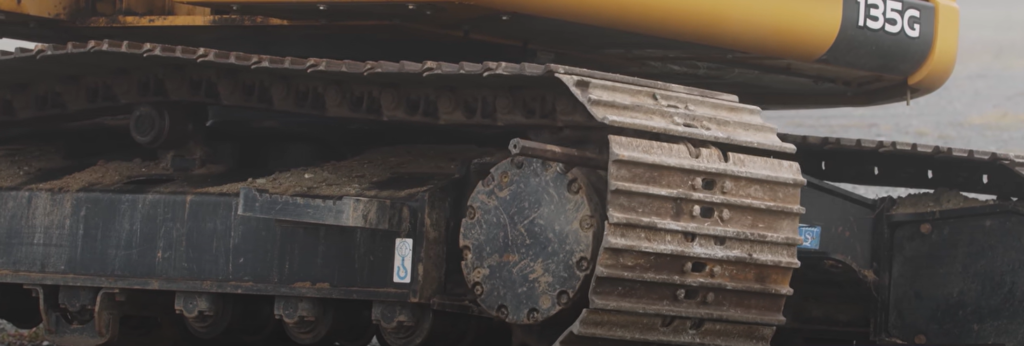Bottom rollers, often called down rollers or lower rollers in specific contexts, are critically important in various types of machinery, especially those with conveyor systems, belt-driven operations, or tracked vehicles like piling rig excavators and bulldozers. Their primary function is to provide support and guide moving parts, and their role is multifaceted and essential for the smooth and efficient operation of the equipment.

Here are several ways bottom rollers contribute to the importance of their role:
- Support and Guidance: Bottom rollers support and guide the movement of belts, chains, or tracks, especially in systems where the middle portion of the belt or track might sag due to the weight of the load. They ensure that the conveyor or track remains stable and aligned, preventing damage or inefficient operation.
- Distribute Load: These rollers help distribute the weight and load evenly across the entire system. In piling rig’s tracked vehicles, for instance, they prevent excessive weight concentration on any single part, which could lead to premature wear or failure of track components.
- Maintain Tension: In conveyor systems and belt-driven setups, bottom rollers help maintain the proper tension in the belt. This ensures that the belt does not slacken and can efficiently transmit power. Proper tension is crucial for maximizing grip and minimizing slippage, ensuring optimal performance and energy efficiency.
- Reduce Friction and Wear: By acting as additional points of contact, bottom rollers reduce friction and wear on other critical parts such as the drive rollers or sprockets. This prolongs the lifespan of these components and reduces maintenance and repair costs over time.
- Shock Absorption: In applications where shocks and vibrations are frequent, such as in heavy construction machinery, bottom rollers can act as shock absorbers. They cushion the impact of sudden loads or uneven terrain, helping to maintain track chain or track integrity and protect sensitive machinery from damage.
- Improve Efficiency and Safety: Properly functioning bottom rollers contribute to the mechanical efficiency of the equipment. They minimize energy loss through reduced friction and help maintain the structural integrity of the track chain, belt, or track system. This not only enhances performance but also improves safety by preventing the likelihood of system failures.
- Maintenance and Accessibility: Bottom rollers are designed for easy maintenance and replacement. Regular inspection and maintenance of these components help identify potential issues before they lead to time-consuming and costly repairs, ensuring the reliability and availability of the machinery.
In summary, the bottom rollers play a crucial role in maintaining the functionality, performance, and longevity of various types of machinery by providing support, guidance, load distribution, and tension maintenance. Their importance should not be underestimated as they significantly influence the reliability and economic operation of the piling rig.
